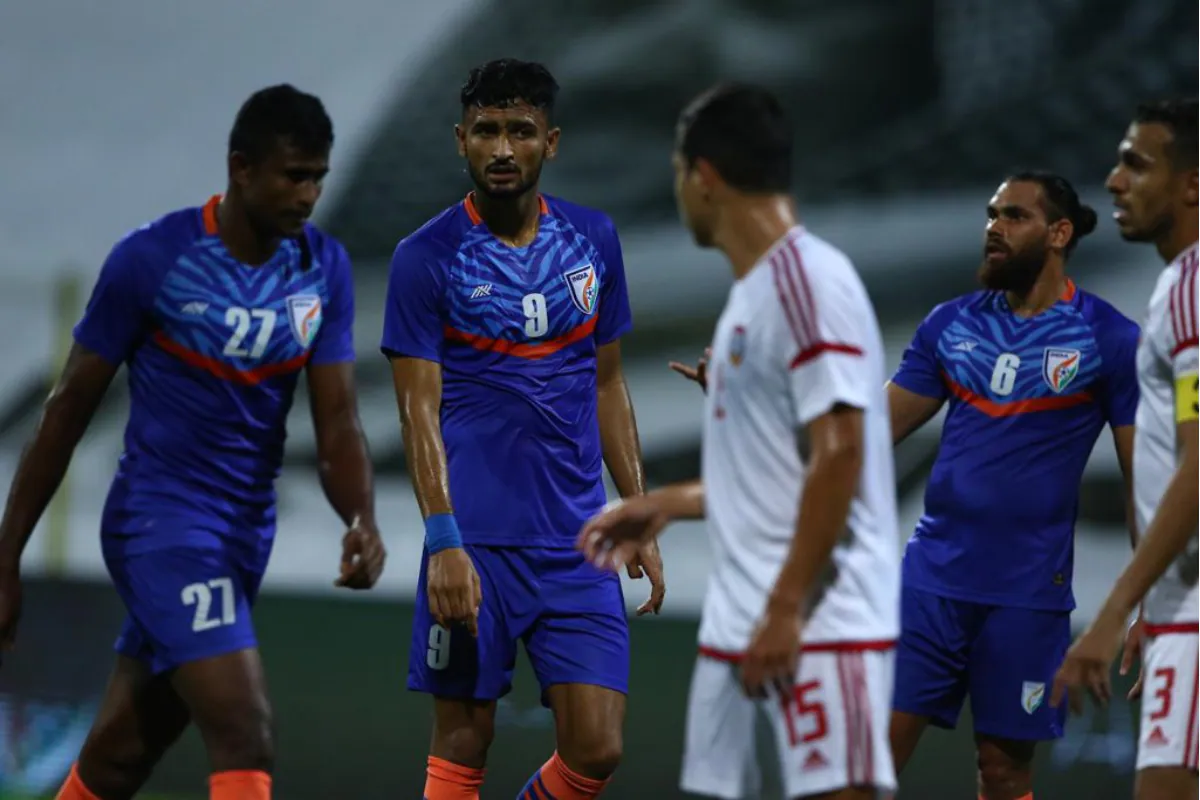[ad_1]
Indian men’s football team suffered their heaviest defeat in over a decade as they went down 6-0 to United Arab Emirates (UAE) in an international friendly at the Zabeel Stadium on Monday.
Ali Mabkhout scored a hat-trick as Khalil Ibrahim, Fabio Lima and Sebastian Tagliabue scored once each for UAE as the young Indian team looked hapless in defence.
The drubbing against UAE was the worst since 14 November 2010, which was 3788 days ago, when Kuwait defeated India 9-1 in a friendly clash in Abu Dubai.
India had drawn 1-1 against Oman in their previous friendly when Manvir Singh had cancelled out an own goal.
After handing out 10 debuts in that game against 81st ranked Oman, as against the 104th UAE, head coach Igor Stimac decided to make changes to starting XI and gave 22-year-old forward Liston Colaco his debut.
Defensive Nightmare
Some of the changes were in defence for India, as Gurpreet Singh Sandhu replaced Amrinder Sinh in goal and Adil Khan and Mashoor Shereef were at the centre with Pritam Kotal coming in on the right. Only Akash Mishra retained his place as Stimac chose to try out a new combination.
The slowness of the players was evident from the get-go as the UAE players looked far more comfortable in possession and on the break.
20-year-old Apuia got a start after a good showing in the second half against Oman, and showed glimpses of his calm and composed ball-playing with the youngster dropping in between the two centre-backs.
Mid-field mess
Ahead of him were Suresh Singh Wangjam, who was bullied off the ball by stronger and more confident opponents, and Anirudh Thapa, who was tasked to play as a second striker-cum-attacking midfielder. The latter, along with Liston Colaco and Lallianzuala Chhangte, tried to keep their positional shape intact as Manvir trying to counter-press, albeit unfruitfully.
At times, the UAE players, including their keeper Ali Khasif, who was comfortable in possession, passing it around with his defenders, to draw out the Indian forwards. The resultant imbalance resulted in quick through balls from an inventive Fabio Lima and UAE were able to make quick transitions in an overcrowded mid-field to devastating effect. Mabkhout was the main beneficiary, scoring a hat-trick.
“I expect our players to get more experience no more. We are not obsessed with the result. The players have to feel free and express themselves and not feel any pressure, getting experience is the most important thing in these matches,” Stimac had said ahead of the two friendlies.
The intention was clear from the head coach. Trying out new formations and tactics. The games were to serve as ‘practice’ with new players, settling into a new style of play and alongside teammates they were partnering for the first time.
Even though some fans took to social media to express disappointment from the results and a ‘lack of intent’ from the players, others lauded the effort of the All Indian Football Federation (AIFF) to arrange for stronger opponents.
Road ahead
The Indian football team had returned to the field after a gap of 492 days. The team and the coach barely got a week to prepare for the games and it showed.
The friendlies were part of the preparations for the joint qualifying round matches of the 2022 World Cup and 2023 Asian Cup to be played in June. Even though India are out of the reckoning for a 2022 World Cup berth but are still in contention for qualification in the 2023 Asian Cup.
India will next take on Qatar on 3 June, followed by Bangladesh on 7th and Afghanistan on 15. India are currently fourth in Group E with three points from five games. Qatar top the table with 13 points with Oman a point behind them in second.
A third-place finish in the group will help India get a direct berth in the third round of the qualifiers for the 2023 Asian Cup.
[ad_2]
